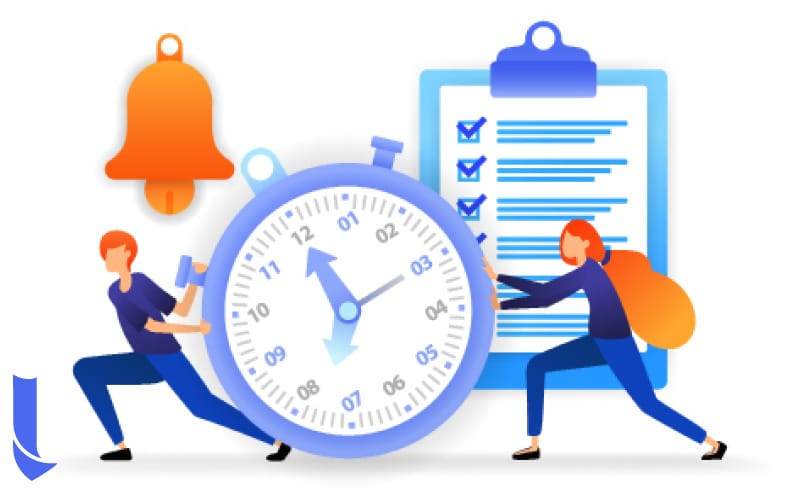BETTER MANAGE YOUR TIME WITH TIME-BOXING AND TIME-BLOCKING

Time management is a constant challenge, exacerbated by the overload of information and the never-ending distractions of modern life. In this context, two particularly effective methods have emerged: time-boxing and time-blocking. Although often confused, these concepts have subtle but important differences. Do you struggle with managing your time or finding time to accomplish your tasks? These two methods, based on scientific research on attention, concentration, and how the brain works, can help you.
Concepts
Time-boxing: Setting time limits for tasks
Time-boxing involves allocating a fixed period of time to a task, whether it is finished or not. This means that after the allocated time has passed, you move on to another activity, even if the task isn't completely finished. This approach promotes proactive time management by reducing perfectionism and limiting procrastination.
Example: Spend 30 minutes writing a report without trying to finish it in a single session.
Time-blocking: Structuring your day into dedicated time blocks
Time-blocking goes further by segmenting the entire day into predefined time blocks, each reserved for a specific activity. Unlike time-boxing, which is generally applied to a single task, time-blocking organizes your entire schedule.
Example: Block two hours in the morning for meetings, one hour to respond to emails, and three hours for deep work.
Why do these approaches work?
Attention and Cognitive Resource Management
Neuroscience shows that the human brain has strict limits when it comes to attention and concentration. According to the theory of attentional resources, we have a limited reserve of mental energy each day, making it crucial to use this focused time effectively.
Time-boxing and time-blocking help:
- Optimize periods of concentration: By structuring your time, you avoid getting lost in endless tasks or unnecessary distractions.
- Limit cognitive overload: These methods promote regular alternation between intense mental effort and breaks, respecting the brain’s natural cycles (ultradian rhythms, around 90 minutes).
Fighting Procrastination
A study by Steel (2007) on procrastination shows that setting specific deadlines reduces the tendency to delay. Time-boxing, by creating a light but effective time pressure, stimulates engagement without causing excessive anxiety.
The Role of Planning in Willpower Management
Psychologist Roy Baumeister’s work on "decision fatigue" highlights that our ability to make decisions diminishes throughout the day. Time-blocking, by planning all important activities in advance, frees the brain from this burden, allowing it to preserve mental energy for critical tasks.
The Benefits of These 2 Methods
For Time-boxing: Manage expectations and perfectionism
- Reduce pressure: Knowing that a task has a limited duration helps accept a "good enough" version rather than a perfect one.
- Improve concentration: The brain, aware of the time constraint, uses its attention resources more efficiently.
For Time-blocking: Structure and prioritize
- Visibility of priorities: Planning time blocks based on task importance ensures that the essentials are addressed first.
- Prevent interruptions: By blocking time for deep work, you implicitly communicate to others (and to yourself) that you are unavailable.
Limitations and Solutions
Despite their advantages, these methods have limitations.
- Perceived rigidity: Time-blocking can seem inflexible in the face of unexpected events. Solution: Include margins for interruptions or adjust blocks in real-time.
- Fatigue from strict time management: Overuse of time-boxing can mentally drain you. Solution: Alternate with unstructured periods for creative or relaxing activities.
Putting It Into Practice: Tips to Get Started
- Start small: Try time-boxing on a specific task or adopt time-blocking for half a day.
- Use digital tools: Apps like Google Calendar, Notion, or Toggl Track make implementing these methods easier.
- Respect breaks: Include moments of disconnection (Pomodoro technique, micro-breaks).
- Evaluate and adjust: After a week, assess what works and what doesn’t, and adjust your practices accordingly.
Conclusion
Time-boxing and time-blocking offer complementary approaches to improve time and attention management. By relying on the brain’s natural cycles and limiting unnecessary decisions, these methods help better juggle priorities and maximize productivity without sacrificing mental health. In a world where time always seems to be in short supply, these tools are valuable allies in taking back control of our days.
